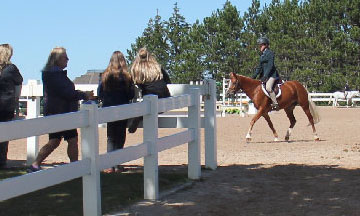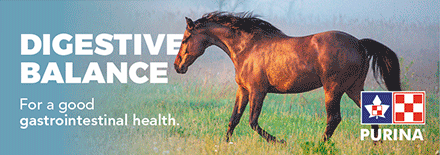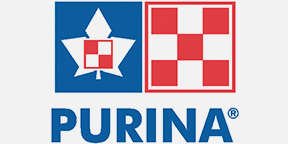By: Kalina Rutledge, BBRM Equine, Marc-Andre Blouin, B.Sc. & Josée Lalonde, B.Sc.
For many Canadians, the end of the Royal Agricultural Winter Fair, along with the beginning of the first falling snowflakes, marks the end of horse show season. Some riders head south with their mounts, but for those of us who aren’t snow birds, we do our best to keep our horses relatively fit over the winter months despite the frigid temperatures and fuzzy hair coats. Depending on your level of competition during the summer months, this change in season can result in a drastic change to your horse’s level of exercise, management and, therefore, feed requirements.
Many horse owners struggle with the constant battle of finding the balance between feeding enough feed to keep their horse at a proper weight during the cold winter months without making them “hot.” This time of year many horses are not working as hard as they were during the show season and may have limited turnout due to inclement weather.
Numerous factors come into play in this situation. First, don’t always blame the feed. It is winter and there is snow, often a lot of snow, which makes it hard for your horse to run around and play with his buddies like he can in a grassy paddock. It is expected that he might be a little fresh when he gets into an arena that isn’t knee deep in snow or slippery with ice. The days are also shorter, making his turnout time shorter than usual if he gets brought in at night. Secondly, during the winter your horse can burn the amount of calories equivalent to one hour of light exercise just to stay warm outside. This means you can’t necessarily cut back significantly on calories because your horse is not being ridden as often or as hard as in the summer months or just because he has extra energy when you ride. Instead, think of using a different calorie source; you may have to get into a routine of switching your feed from summer to winter months. The feed that gives your horse the immediate energy to gallop through a cross-country course and launch himself over those jumps and replenish his muscle glycogen stores afterwards is not necessarily the same feed that you need when you are asking for a calm, collected canter while confined to a little indoor course.
In order to pick the proper calorie source, consider how the nutrients work. Energy is stored in muscles in the form of glycogen. During high-intensity exercise glycogen is converted to glucose and eventually to ATP (adenosine triphosphate) for fuel needed for muscle contractions. After the exercise, glycogen needs to be replenished in order for your horse to recover. Starch is the best fuel to replenish glycogen but causes an insulin response. Certain horses are susceptible to this insulin response which can be observed as them becoming “hot.” Fat cannot be stored as glycogen and therefore will not replenish it. Fat can be used as energy but it takes much longer to convert to ATP and therefore it is a good fuel for low-intensity exercise during the winter months and will not produce an insulin response that could make your horse “hot.”
Now that you know the basics of how each nutrient works, consider which is best for your horse’s needs. If you are no longer in the middle of showing and therefore do not require the immediate energy that starch brings, a diet higher in fat and fibre may be your best option. This can provide your horse with the calories it needs to stay warm and in good condition for the winter and enough energy for low-intensity exercise, but will skip the insulin response that could make your horse “hot.” Once you have the calorie source and feed type decided, remember that the amount of feed should always be determined by the horse’s body condition not the horse’s energy level or attitude. If you have an energy problem, consider a different calorie source.
Another thing to consider for your horse’s diet is a ration balancer. For horses that do require a smaller volume of feed during the winter or if you discover your horse remains a good weight with only hay once his exercise level lowers then a ration balancer is something you should think about. Ration balancers provide the proper balance of vitamins and minerals that your hay or ration may lack. Especially in Ontario, where we have no selenium in our soil, you can be guaranteed your horse will be selenium deficient if he is only eating hay or pasture. If your horse maintains a good weight while only eating hay, a ration balancer is the best way to ensure that the inner workings of your horse will remain top notch. Important things like that shiny coat and those strong hooves will last all year so that you don’t have to work back up to them come spring and the new show season. It can be compared to you taking a multi-vitamin or making sure you eat your fruits and veggies each day. Over the short term you will seem fine without, but those vitamins and minerals are what ensure your body has everything it needs to keep working properly over the long term.
Our Equilizer and Optimal products concentrate the vitamins and minerals essential to your horse into a pellet form. This allows your horse to think that he is getting some feed but really it is just the essential parts of his nutritional requirements without the extra calories that an easy keeper doesn’t need. These products are made to complement our local hays and Purina feeds. This means that depending on the Purina feed you use, for every kilogram under the recommended amount that you feed, you need to replace it with 200-300 grams of Equilizer or Optimal. For horses that only require hay to remain a good weight, Equilizer or Optimal can be their sole ration. This winter you may find your best results are with Optimal. This past summer produced a lot of hay that is low in protein and calcium and Optimal will be able to compensate for that. Overall, ration balancers are the ideal way to make sure your horse has everything it needs to come through the winter looking great, without adding extra calories.
The last but possibly most important thing to consider for your horse’s winter diet is something almost everyone overlooks: water. Everyone thinks about water during the hot summer months but it is never the first thing on your mind in the dead of winter, though it should be. A dehydrated horse will either be lazy or crazy, which are also the two biggest complaints about a horse’s attitude that gets blamed on feed. Winter often results in dehydrated horses and the main reason is temperature. The colder weather suppresses thirst and also makes water colder than your horse would prefer. As a result your horse simply doesn’t drink enough. To put things into perspective, a 1,000-lb horse needs to drink two five-gallon buckets of water just to bring the dry hay he is eating up to the same moisture level as the pasture he was on in the summer. The best way to prevent dehydration is to add loose, plain white salt to your horse’s feed and make sure he has access to water at all times, and luke warm water when possible. It may sound simple, but water is the most overlooked “nutrient.”
With winter well on its way, sit back and think about your horse and how his management and work load has changed since summer. Think about your feed and the type of calories it contains, whether you have a proper balance of vitamins and minerals and if your horse is properly hydrated. It should not be a huge struggle to be able to enjoy your horse this winter while keeping him controllable and looking great.
Have a question you need answered or a subject you’d like to see covered? Email Kalina Rutledge at Kalinar@agribrands.ca










